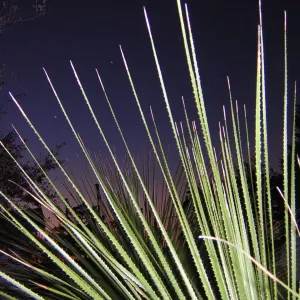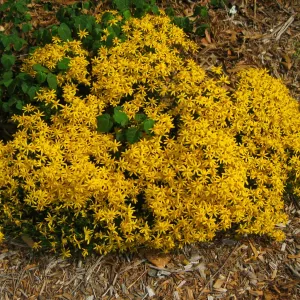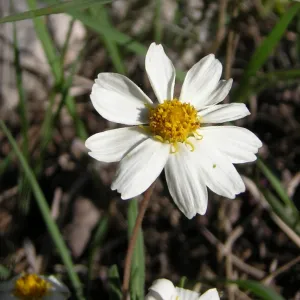By Christine Westerman – Boerne Chapter, Native Plant Society of Texas
Published in the Boerne Star on August 22, 2014.
I’ve heard it is a common misconception that native plants do not require care or watering; meaning, native plants are ideal for the lazy gardener. If I were in an ambitious mood, I might compose some vigorous arguments against the idea that, as a native plant gardener, I should be categorized as lazy. On the other hand, I may just sit back with a tall glass of iced tea and enjoy watching the butterflies covering the flowers along the driveway that I last watered, I believe it was, in July 2013? (After all, it was a little bit dry then.)
But maybe this misconception does hint at some of the difference between a native plant gardener and a gardener of the more traditional sort. We native plant gardeners often employ observation as much as perspiration, as in, “rather than the effort of pulling up that seedling, why not see what it turns out to be?” I discovered one of my favorite native plants, the windflower (Amemone berlandieri), by observing seemingly unremarkable seedlings. This little plant sends up small discreet leaves that you would hardly notice except for the fact that it’s February, and the little rosette of green stands out from the surrounding browns and golds of dormant grass and last summer’s wildflowers. Then the daisy-like flowers emerge, pretty much the only thing in bloom, ranging from white to a delicate pale lavender. Just a lovely little preview to get you through the rest of winter until next spring’s wildflower fest.
But to get back to the topic of lazy-ness (and I still might muster some energy to debate that), one of the original ideas for an article on native plants, a good writing prompt for a novice like me, was something along the lines of “My Five Fave Natives!” So I started to list five of my personal favorite landscape plants, which includes:
- Sotol (Dasylirion texanum) – bold, spiky, dramatic.
- Beargrass (Nolina texana) – a nice contrast to bold and spiky, gives you the look of a big soft bunch of grass but always stays green.
- Autumn sage (Salvia greggii) – wonderful for hummingbirds…I once observed a hummingbird smack in the middle of downtown San Antonio feeding from an autumn sage, in a pot, on the sidewalk. Right by the street.
- Blackfoot daisy (Melampodium leucanthum) – beautiful little white sprawling daisy that gives you flowers when it’s 100 degrees out.
- Damianita (Chrysactinia mexicana) – shrubby, aromatic plant with a desert attitude and surprisingly vivid yellow flowers.



Then I looked over the list and thought about what these plants have in common – for example, that they are all growing along my driveway in material that has a closer resemblance to caliche than to soil. That they all give me something to enjoy watching – hummingbirds, butterflies, bees, even our beagle making a little den under the beargrass clump. That they all survived a record drought with almost no supplemental watering, no weeding, and no fertilizer. And yes, that basically I put them in the ground and let them do their thing. Does this mean I’m lazy? I’ll get back to you on that. As soon as I’m ready to get up out of my hammock.
Christine Westerman lives in Pipe Creek and is an environmental consultant and volunteer for the Texas Parks and Wildlife Department and the Turtle Survival Alliance. This is her first article for the Boerne Star. For more native plant information, check out the Native Plant Society of Texas Boerne Chapter website at: http://www.npsot.org/wp/boerne/.
